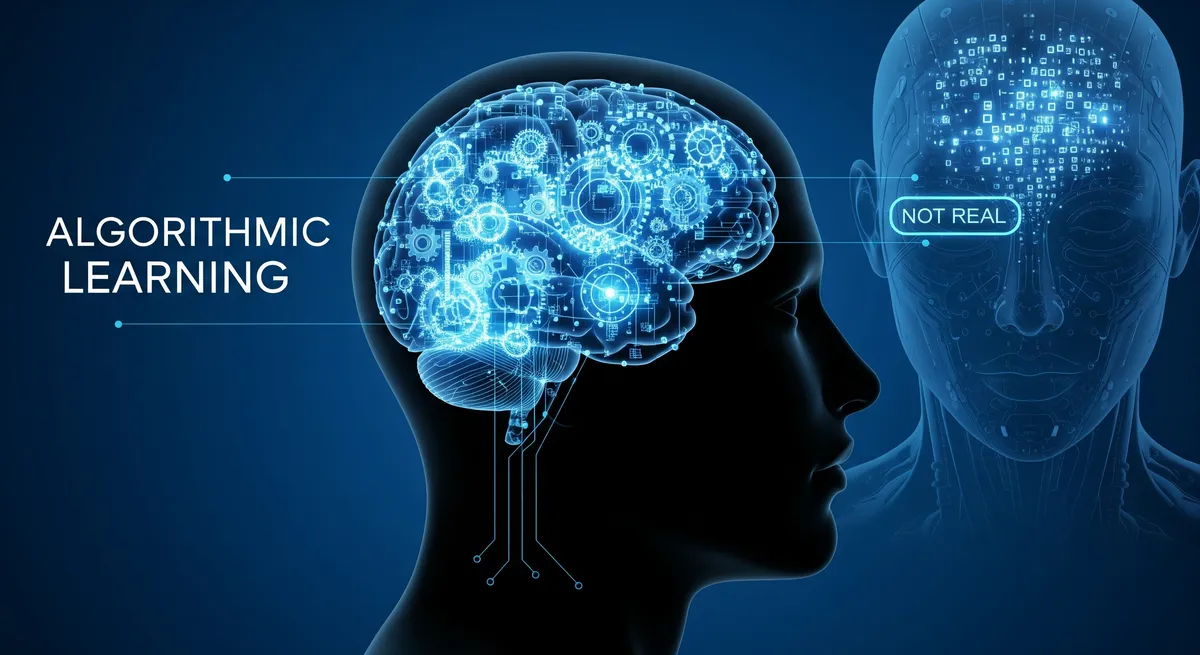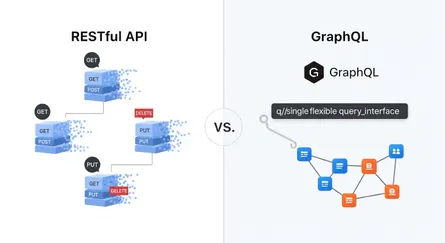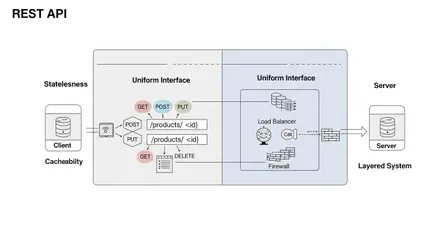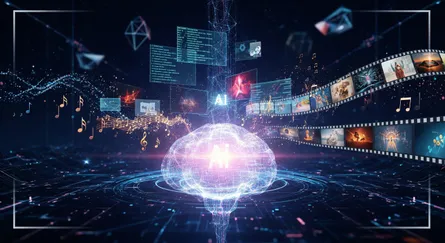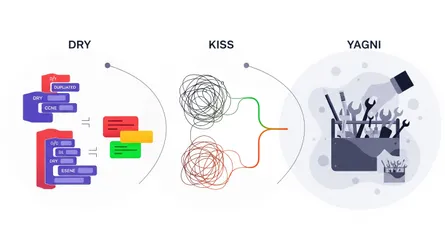The term artificial intelligence (AI) has been bandied about a lot in the last few years. AI appears to be present everywhere, from tech conferences to science fiction films. But does it actually deliver on its promises? It’s critical for software engineers to see past the buzzwords and comprehend what artificial intelligence (AI) actually is and isn’t.
What Is Meant by “AI Is Not Real”?
The claim that “AI is not real” casts doubt on popular belief about the technology. It implies that modern artificial intelligence is not actually intelligent. Rather, it is predicated on advanced data processing methods and algorithms.
Artificial vs. Natural Intelligence
“Intelligence cannot exist in an artificial environment; intelligence exists in natural environments; artificial environments do not contain intelligence.” The distinction between actual intelligence—which is characterized by comprehension, reasoning, and consciousness—and artificial intelligence—which is essentially just sophisticated processing and pattern recognition—is emphasized by this remark.
The Character of Present-Day AI: Algorithmic Education
Instead of actual intelligence, the AI systems we employ today rely on algorithmic learning. In other words, AI models are built to learn from data and forecast outcomes based on patterns they identify.
Algorithmic Learning: What Is It?
Developing models that can analyze massive volumes of data in order to identify trends and reach conclusions is known as algorithmic learning. Algorithms used in machine learning, a branch of artificial intelligence, become more effective with increased data exposure. These models, however, are not capable of understanding or thinking like people are.
Example: Predictive Text
A common example of algorithmic learning is predictive text on smartphones. The system analyzes your typing patterns and suggests words based on previous inputs. While it can seem intelligent, it is simply using statistical models to predict the most likely next word.
What Distinctions Between Intelligence and Algorithmic Learning?
Knowledge of context, logic, feelings, and consciousness are all components of true intelligence. In contrast, algorithmic learning can only identify patterns in data and forecast future events based on those patterns.
Limitations of Algorithmic Learning
- Lack of comprehension: AI merely recognizes patterns in the data it processes; it has no understanding of the data itself.
- Contextual Limitations: Two essential elements of human intelligence, context and nuance, are difficult for AI to understand and process.
- Reliance on Data: Unlike human intelligence, which can learn and adapt with little information, artificial intelligence (AI) depends on enormous volumes of data to operate and advance.
Why Is
Why Is AI So Effective in Certain Applications?
AI excels in applications where data patterns are complex but well-defined. These include image recognition, natural language processing, and predictive analytics. The effectiveness of AI in these areas stems from its ability to process vast amounts of data quickly and identify patterns that humans might miss.
What Are the Limitations of AI?
Despite its strengths, AI has significant limitations:
- Lack of Understanding: AI doesn’t understand context or meaning. It processes data based on patterns without comprehension.
- Data Dependency: AI performance depends heavily on the quality and quantity of data. Poor data leads to poor outcomes.
- Limited Adaptability: AI struggles with tasks that require adaptability and generalization beyond its training data.
Example: Chatbots
AI-powered chatbots can handle routine customer service inquiries efficiently. However, they often fail to provide satisfactory responses when faced with nuanced or complex queries, highlighting their limited understanding and adaptability.
When Should You Use AI in Your Projects?
As a software engineer, it’s crucial to recognize when AI is appropriate for your projects. Here are some scenarios where AI can be beneficial:
Automating Repetitive Tasks
AI can automate mundane, repetitive tasks, freeing up human resources for more complex work. For instance, AI can be used in data entry, simple customer interactions, and routine analysis.
Enhancing Data Analysis
AI’s ability to process large datasets quickly makes it invaluable for data analysis. It can identify trends, anomalies, and insights that might be missed by human analysts.
Personalizing User Experience
AI can enhance user experiences by personalizing content and recommendations. For example, AI algorithms power the recommendation systems of streaming services like Netflix and music platforms like Spotify.
When Might AI Not Be the Best Fit?
Despite its potential, AI is not always the right tool. Here are some situations where traditional programming or human intervention might be preferable:
Tasks Requiring Deep Understanding
Tasks that require deep understanding, empathy, or creative problem-solving are beyond the current capabilities of AI. Human intelligence is necessary for these areas.
Small or Poor-Quality Data Sets
AI requires large, high-quality datasets to function effectively. In situations where such data is unavailable, traditional methods might yield better results.
Need for Fine-Grained Control
AI systems operate within the parameters set by their algorithms. When precise control over every aspect of the process is required, traditional programming offers more reliability.
Implications of AI Misunderstanding in the Real World
It is possible to have irrational expectations and possibly fail when one does not know what AI can and cannot achieve. It is crucial to approach AI projects knowing exactly what it can and cannot do.
Misunderstanding what AI can and cannot do can lead to unrealistic expectations and potential failures. It’s essential to approach AI projects with a clear understanding of its capabilities and limitations.
Autonomous vehicles, for instance
One well-known illustration of AI’s potential and constraints is autonomous cars. Even though AI is capable of managing a lot of driving responsibilities, it still has trouble in unpredictable scenarios when human judgment is needed. Safety concerns may arise from overestimating AI’s present capabilities in this field.
AI’s Future: Filling the Gap
Creating a bridge between existing algorithmic learning and real artificial intelligence is essential to the future of AI. Scientists are trying to develop systems that can learn from fewer instances, comprehend context, and use reasoning more akin to that of a person.
Conclusion
In conclusion, although current AI is not fully intelligent in the sense of humans, it does provide strong tools for certain uses. In terms of true intelligence, realizing that “AI is not real” enables us to set reasonable expectations and make effective use of its advantages.
We can better appreciate the potential and constraints of artificial intelligence if we comprehend the nature of algorithmic learning. With this knowledge, we can decide when to deploy AI in our projects and when to stick with tried-and-true techniques or human expertise.
References
- Turing, A. M. (1950). Computing Machinery and Intelligence. Mind, 59(236), 433-460.), https://academic.oup.com/mind/article/LIX/236/433/986238
- Searle, J. R. (1980). Minds, brains, and programs. Behavioral and Brain Sciences, 3(3), 417-424.), [Link to a reputable source for the paper, e.g., a university archive or academic database]
- “The Limitations of AI” - MIT Technology Review.), [Search on technologyreview.com for relevant articles]
- “What AI Still Can’t Do” by Gary Marcus.), [Link to articles or books by Gary Marcus on AI limitations]
- “Artificial Intelligence: A Modern Approach” by Stuart Russell and Peter Norvig. (Chapter on Philosophical Foundations.), [Link to a reputable source for the book or summary]
- “The Myth of Artificial Intelligence: Why Computers Can’t Think the Way We Do” by Erik J. Larson.), [Link to a reputable source for the book or summary]
- “Understanding Machine Learning: From Theory to Algorithms” by Shai Shalev-Shwartz and Shai Ben-David.), [Link to a reputable source for the book or summary]
- “AI and the Limits of Human Understanding” - (Example: Article from a philosophical journal or tech ethics publication.), [Link to a relevant article]
- “Why AI is Harder Than We Think” by Melanie Mitchell.), https://arxiv.org/abs/2104.12871
- “The Difference Between Narrow AI, General AI, and Super AI” - (Example: Article from a tech blog like Forbes Tech, TechCrunch.), [Link to a relevant article]
- “Data-Driven: Creating a Data Culture” by Hilary Mason and DJ Patil. (Discusses the role of data in algorithmic systems.), [Link to a reputable source for the book or summary]
- “The Master Algorithm: How the Quest for the Ultimate Learning Machine Will Remake Our World” by Pedro Domingos.), [Link to a reputable source for the book or summary]
